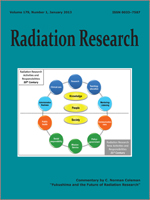The complexity of a radionuclear event would be immense due to varying levels of radiation exposures and injuries caused by blast-associated trauma. With this scenario in mind, we developed a mouse model to mimic as closely as possible the potential consequences of radiation injury and radiation combined injury (RCI) on survival, immune system phenotype, and immune function. Using a mouse burn injury model and a 137CsCl source irradiator to induce injuries, we report that the immunological response to radiation combined injury differs significantly from radiation or burn injury alone. Mice that underwent radiation combined injury showed lower injury survival and cecal ligation and puncture (CLP) induced polymicrobial sepsis survival rates than mice with single injuries. As anticipated, radiation exposure caused dose-dependent losses of immune cell subsets. We found B and T cells to be more radiation sensitive, while macrophages, dendritic cells and NK cells were relatively more resistant. However, radiation and radiation combined injury did induce significant increases in the percentages of CD4 regulatory T cells (Tregs) and a subset of macrophages that express cell-surface GR-1 (GR-1 macrophages). Immune system phenotyping analysis indicated that spleen cells from radiation combined injury mice produced higher levels of proinflammatory cytokines than cells from mice with radiation or burn injury alone, especially at lower dose radiation exposure levels. Interestingly, this enhanced proinflammatory phenotype induced by radiation combined injury persisted for at least 28 days after injury. In total, our data provide baseline information on differences in immune phenotype and function between radiation injury and radiation combined injury in mice. The establishment of this animal model will aid in future testing for therapeutic strategies to mitigate the immune and pathophysiological consequences of radionuclear events.
How to translate text using browser tools
5 December 2012
Immune System Phenotyping of Radiation and Radiation Combined Injury in Outbred Mice
G. Tajima,
A. J. Delisle,
K. Hoang,
F. M. O'Leary,
K. Ikeda,
M. Hanschen,
V. M. Stoecklein,
J. A. Lederer
ACCESS THE FULL ARTICLE
<
Previous Article
|

Radiation Research
Vol. 179 • No. 1
January 2013
Vol. 179 • No. 1
January 2013




